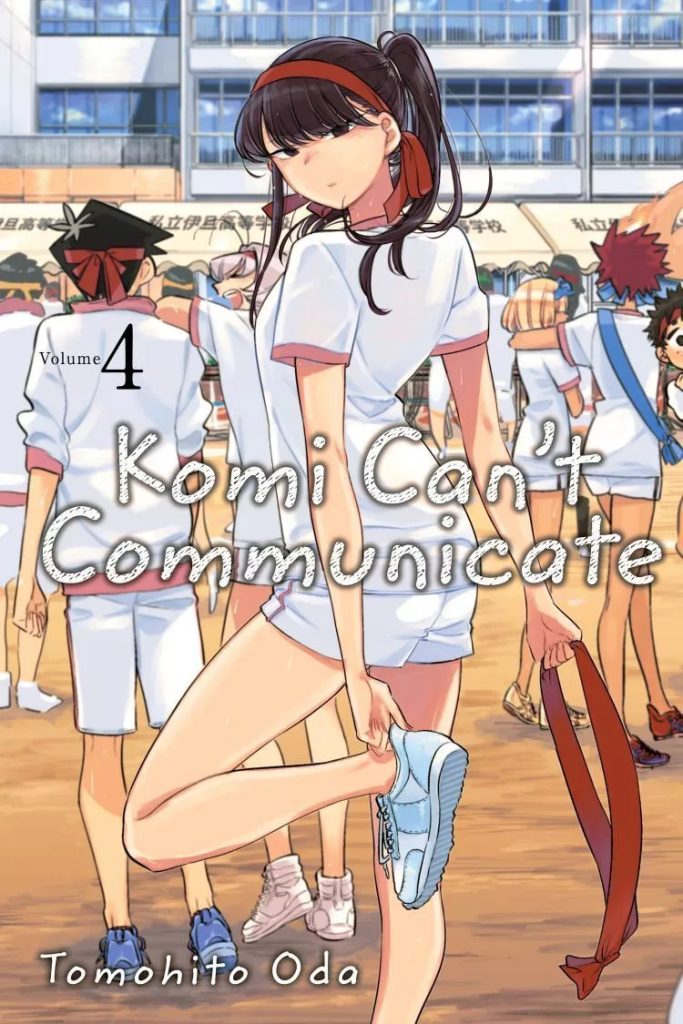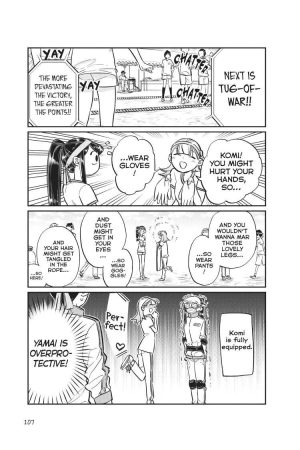Review by Ian Keogh
Komi Can’t Communicate concerns the day to day experiences of teenage schoolgirl Shoko Komi, forming a continuing comedy soap opera with the hook being Komi’s immense social anxiety. It prevents her talking to fellow pupils, but after initial encouragement from also awkward Hitohito Tadano she’s been able to write down her feelings. He’s vowed to make her a hundred friends, and her social circle broadened further in Volume 3.
Tomohito Oda treats the series as ongoing, and Volume 4’s ‘communications’ cover the end of the school holidays and the return to school. As the cover shows, the longest story, split into two parts, covers the school’s sports festival. It might be assumed a lack of ability to communicate might not be such an issue during sports, but Oda has a clever solution to that as it’s during the moments when the other students cheer on their classmates that the problems manifest. There’s also a genuinely tense relay race, broken down cinematically in Oda’s effectively delicate art.
Since the beginning Oda has used little narrative boxes to explain what the silent Komi’s feeling, accompanied by pictures of her looking awkward, and this goes into overdrive during an opening chapter concerning video games. It’s silly in places, but the purpose is to highlight how severely Komi’s condition has restricted her socialising, as she has no idea about video games her friends remember playing when younger.
Every volume has a story concerning people misunderstanding Komi’s lack of communication, considering it an alluring sign of aloofness from a beautiful girl. Here that’s Tadano’s sister and newcomer Nakoko Inaka, a country girl. The repetition seems to represent a common social presumption in Japan, but this story also serves of the purpose of showing Tadano’s family isn’t as well off as others in the area and to show Najimi’s attitude to summer homework. Inaka’s story makes a point, but is played as comedy as she completely misinterprets what Komi’s doing.
This is approached from a different angle in a later chapter where Tadano is a more effective interpreter of what Komi’s feeling than other classmates. It’s neat for displaying his empathy.
While there is progress and a gradual introduction of new supporting characters, any individual volume of Komi Can’t Communicate communicates well enough on its own, so you don’t have to start with the first. While time just zips by, progress is slow as Komi very gradually becomes a little more confident, and this is handled with charm and sympathy. Every volume hits the mark. Bring on Volume 5.






